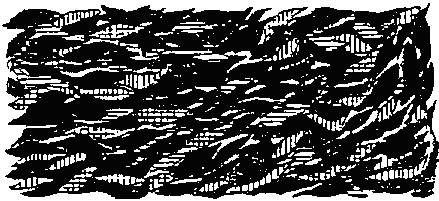Trademark Trial and Appeal Board
Patent and Trademark Office (P.T.O.)
*1 IN RE CAFE AU LAIT, INC.
Serial No. 74/173,363
July 8, 1994
Rachel Blue
Trademark Examining Attorney
Law Office 13
(Craig Morris, Managing Attorney)
Before Rice, Cissel and Hairston
Administrative Trademark Judges
Opinion by Cissel
Administrative Trademark Judge
On June 6, 1991 applicant applied to register the design shown below,

which is described in the application as "blue, pink and yellow particles interspersed with tea leaves," on the Principal Register for "tea." The application is based on applicant's claim of use of the mark in commerce since February 2, 1988. The specimen submitted with the application is a clear plastic bag bearing the trademark "Paridise(R) Tropical Tea" and a design. Inside the bag, visible through the plastic, is a mixture of what appears to be ground tea leaves interspersed with shredded bits of blue, pink and yellow flowers.
The Examining Attorney refused registration under Sections 1, 2, and 45 of the Act on the ground that the matter sought to be registered does not function as a trademark to identify applicant's tea and distinguish it from tea from other sources. Registration was also refused, under the same statutory provisions, on the ground that the matter sought to be registered is functional, in that applicant's flower particles are a necessary ingredient in applicant's tea.
The second ground for refusal was later withdrawn, but when the Examining Attorney made final the refusal based on the finding that the appearance of the colored flower particles mixed with the tea does not function as a trademark for the tea, applicant appealed.
No oral hearing was requested, but applicant and the Examining Attorney filed briefs.
The record includes a printed advertising brochure for applicant's tea. The photo at the bottom of this advertisement shows packages of tea, a glass of iced tea, and some fresh-cut flowers, all placed upon a horizontal surface which is covered with what appears to be applicant's mixture of tea and colored flower particles. The advertisement makes no mention of the colors or the flower particles, however.
The Examining Attorney made of record copies of excerpts from printed articles retrieved from the Nexis(R) computer data base of publications. The excerpts show that some teas are flavored with flowers. This fact is not disputed by applicant.
Applicant's tea, however, is not flavored by the flower particles. Attached as an exhibit to the declaration of applicant's president is a letter from the supplier of applicant's tea blend. He states that the petals and flowers added to the blend do not have any influence on the taste of this particular tea and that "[t]hey have just been added to make this product more attractive in the consumer's eyes."
Section 1 of the Lanham Act defines the term "trademark" as including any device used to identify the source of goods and to distinguish them from similar products from other sources. It is well settled that the configuration of a product can serve as a trademark for it. Kohler Co. v. Moen, Inc., 29 USPQ2d 1241, (7th Cir.1993). In a similar sense, the color of a product can function as a trademark to identify and distinguish goods. In re Owens-Corning Fiberglass Corp., 774 F.2d 1116, 227 USPQ 417 (Fed.Cir.1985).
*2 Turning to the case at hand, we note that the position of the Examining Attorney is not that the configuration of applicant's mixture of tea with colored flower particles could not function as a trademark to identify and distinguish applicant's tea, but rather that it does not. The article excerpts referenced above demonstrate that consumers may have reason to expect flowers to be used to flavor tea. From this fact we could speculate that the presence of the flower particles in applicant's blend might be understood, mistakenly, as it turns out, as flower flavoring for the tea.
The fact is, however, we have no basis upon which to determine with any accuracy how prospective purchasers interpret the appearance of applicant's tea mixture. We know that applicant's president thinks the appearance of his company's product is a trademark which identifies its tea. We know that the supplier of the tea adds the colored flower particles not for flavoring, but rather to make the product more attractive. We have nothing in this record, however, upon which to base the conclusion urged by applicant, that consumers understand the appearance of the tea and colored flower particle mixture as a distinctive source indicator. To the contrary, based on the fact that flowers are in fact used to flavor some teas, it would appear that if consumers notice at all the colored particles mixed with applicant's tea, they assume that these ingredients contribute to the flavor or the character of the tea which is made with the blend.
It is significant that applicant has made of record no evidence that anyone other than its president views the appearance of its product as a trademark for it. We have no evidence that the appearance of applicant's tea mixture is promoted by applicant as its trademark. Even the supplier apparently understands that the colored particles were just added for the pleasing appearance they create. Further, there is no evidence that applicant is the only one to offer a tea mixture which includes colored flower particles.
Based on this record we cannot conclude that the configuration for which registration is sought serves as a mark to identify and distinguish applicant's goods. The refusal to register under Sections 1, 2 and 45 of the Act is therefore affirmed.
J.E. Rice
R.F. Cissel
P.T. Hairston
Administrative Trademark Judges, Trademark Trial and Appeal Board

